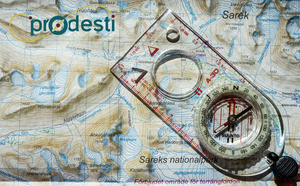“On August 6th, 1945 at 2:45 am (local time), the B-29 bomber piloted by Paul Tibbets, that was named Enola Gay after his mother, takes off from the base of Tinian, carrying a uranium 235 atomic bomb with a power of 15 kilotons, baptized Little Boy.
The crew is made up of twelve men, including four scientists…” (1)
The bomb is dropped at 8:15 am, 9,000 meters above the city.
After 43 seconds of free fall, it explodes 587 meters away from the ground and instantaneously wipes out the city on impact.
The total number of victims is still approximate: it is estimated at 250,000 people, of which 75,000 who were killed directly from the blow. More than 50,000 others will perish later, victims of radiations.
Of the city founded in 1589 by the feudal Lord Terumoto Mori, only ruins and desolation remain.
Total obliteration of the Second General Army in charge of defending the West of Japan.
The crew is made up of twelve men, including four scientists…” (1)
The bomb is dropped at 8:15 am, 9,000 meters above the city.
After 43 seconds of free fall, it explodes 587 meters away from the ground and instantaneously wipes out the city on impact.
The total number of victims is still approximate: it is estimated at 250,000 people, of which 75,000 who were killed directly from the blow. More than 50,000 others will perish later, victims of radiations.
Of the city founded in 1589 by the feudal Lord Terumoto Mori, only ruins and desolation remain.
Total obliteration of the Second General Army in charge of defending the West of Japan.
Takashi Teramoto is a Hibakusha (2). This is how survivors of the nuclear Holocaust are called in Japan. He testifies for posterity to the terrible events that have upset his existence forever. We met him at the memorial spot that he visits often to honor and pray for all the innocent victims who were hit by the folly of humankind. (Images C.M.)
The Genbaku Dome listed as a World Heritage Site
Fully rebuilt, Hiroshima was named the City of Peace by the Japanese Parlement in 1949.
The ruins of the Genbaku Dome, one of the only buildings that resisted in the epicenter of the bombing was listed as a World Heritage site in 1996.
The Peace Memorial attracts one million visitors every year who come to honor the memory of the victims and pray for world peace.
Other than its highly symbolic value, this destination is worth visiting also for its Peace Museum that gathers numerous testimonies linked with the bomb.
At the immediate proximity of Hiroshima can also be found Miyajima of which the Itsukushima temple’s floating torii (also listed as a World Heritage site) is one of Japan’s most famous sites.
We’ll share more on this in our second video on the touristic attractions of Hiroshima’s prefecture.
(1) Source Wikipedia
(2) Hibakusha is a status in Japan. The victim has a card with a code that corresponds to the irradiation level. There are 4 Hibakushas categories, those located close to the epicenter on the day of the explosion, those at less than 2 km from the epicenter during the 2 following weeks, those exposed to radiations fall-outs, and babies in their mother’s womb, if they belonged to any of the 3 categories…
The ruins of the Genbaku Dome, one of the only buildings that resisted in the epicenter of the bombing was listed as a World Heritage site in 1996.
The Peace Memorial attracts one million visitors every year who come to honor the memory of the victims and pray for world peace.
Other than its highly symbolic value, this destination is worth visiting also for its Peace Museum that gathers numerous testimonies linked with the bomb.
At the immediate proximity of Hiroshima can also be found Miyajima of which the Itsukushima temple’s floating torii (also listed as a World Heritage site) is one of Japan’s most famous sites.
We’ll share more on this in our second video on the touristic attractions of Hiroshima’s prefecture.
(1) Source Wikipedia
(2) Hibakusha is a status in Japan. The victim has a card with a code that corresponds to the irradiation level. There are 4 Hibakushas categories, those located close to the epicenter on the day of the explosion, those at less than 2 km from the epicenter during the 2 following weeks, those exposed to radiations fall-outs, and babies in their mother’s womb, if they belonged to any of the 3 categories…
Peace Memorial Ceremony and Schedule of Events
On Thursday August 6th 2015 will take place an honor ceremony (free entrance) in front of the Peace Memorial Monument of Hiroshima in the eponymous park.
Then, the Peace Declaration, calling for the abolishment of nuclear weapons and peace in the world, will be read by the mayor of Hiroshima aimed at the entire world.
At 8:15 am, local time, when the bomb was dropped, the peace bell will be striked and all citizens will hold a minute of silence.
In the evening, small lanterns will be lit up and gifted to the flow of the Motoyasugawa river through a ritual aimed at helping the dead to rest in peace. Some victims of the bomb who were deeply burned had jumped in the river hoping to ease their suffering.
The ceremony will take place around the Genbaku dome, peace memorial of Hiroshima.
Address: Peace Memorial Park, Nakajima-cho, Naka-ku, Hiroshima, Hiroshima’s prefecture.
Close to the bus stop Genbaku-Dome-mae located 15 minutes from the Dentetsu train station of Hiroshima by the bus lines n°2, n°3, n°6 ou n°7. The Dentetsu station is a 3 minute walk from Hiroshima’s JR station.
All of the events for the 70th anniversary are in a downloadable PDF attachment.
Then, the Peace Declaration, calling for the abolishment of nuclear weapons and peace in the world, will be read by the mayor of Hiroshima aimed at the entire world.
At 8:15 am, local time, when the bomb was dropped, the peace bell will be striked and all citizens will hold a minute of silence.
In the evening, small lanterns will be lit up and gifted to the flow of the Motoyasugawa river through a ritual aimed at helping the dead to rest in peace. Some victims of the bomb who were deeply burned had jumped in the river hoping to ease their suffering.
The ceremony will take place around the Genbaku dome, peace memorial of Hiroshima.
Address: Peace Memorial Park, Nakajima-cho, Naka-ku, Hiroshima, Hiroshima’s prefecture.
Close to the bus stop Genbaku-Dome-mae located 15 minutes from the Dentetsu train station of Hiroshima by the bus lines n°2, n°3, n°6 ou n°7. The Dentetsu station is a 3 minute walk from Hiroshima’s JR station.
All of the events for the 70th anniversary are in a downloadable PDF attachment.
Practical information: Peace Memorial Museum of Hiroshima
The Peace Memorial Museum of Hiroshima is made of two main buildings.
In the first, the museum exhibits in detail the state of Hiroshima devastated by the atomic bomb.
In the other wing, there is a photo exhibit with objects, reduced models of the city, testimonies of survivors, paintings, etc. based on facts linked with the historical context of the time.
Address: 1-2, Nakajima-cho, Naka-ku, Hiroshima-shi 730-0811
Phone: +81-(0)82-241-4004
Hours: March-November: 8:30 am - 6:00 pm- August: 8:30 am - 7:00 pm - December-February: 8:30 am - 5 pm
(Note: last admission is 30 minutes before closing)
Rate: Adults: 50 yens - Children*: 30 yens (*elementary, middle and high school.) - 1 EUR = 136.579 YENS
Car access: 25 minutes from the Hiroshima highway interchange on the Sanyo highway.
In public transportation, from the south exit of the JR Hiroshima station:
15 minutes in tram towards Miyajimaguchi and Eba then get off at the Genbaku Domu-mae stop.
20 minutes in Hiroshima Bus towards Yoshijima and get off at the Heiwa-kinen-koen stop.
Parking: not available
Website: www.pcf.city.hiroshima.jpl
In the first, the museum exhibits in detail the state of Hiroshima devastated by the atomic bomb.
In the other wing, there is a photo exhibit with objects, reduced models of the city, testimonies of survivors, paintings, etc. based on facts linked with the historical context of the time.
Address: 1-2, Nakajima-cho, Naka-ku, Hiroshima-shi 730-0811
Phone: +81-(0)82-241-4004
Hours: March-November: 8:30 am - 6:00 pm- August: 8:30 am - 7:00 pm - December-February: 8:30 am - 5 pm
(Note: last admission is 30 minutes before closing)
Rate: Adults: 50 yens - Children*: 30 yens (*elementary, middle and high school.) - 1 EUR = 136.579 YENS
Car access: 25 minutes from the Hiroshima highway interchange on the Sanyo highway.
In public transportation, from the south exit of the JR Hiroshima station:
15 minutes in tram towards Miyajimaguchi and Eba then get off at the Genbaku Domu-mae stop.
20 minutes in Hiroshima Bus towards Yoshijima and get off at the Heiwa-kinen-koen stop.
Parking: not available
Website: www.pcf.city.hiroshima.jpl


































![Vraies tendances ou illusions : radiographie d'un monde en recomposition [ABO] Vraies tendances ou illusions : radiographie d'un monde en recomposition [ABO]](https://www.tourmag.com/photo/art/large_16_9/93540809-65355472.jpg?v=1767624066)















